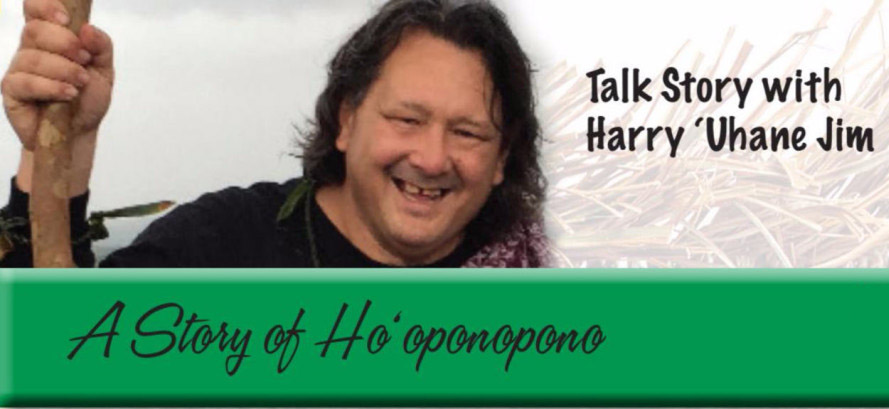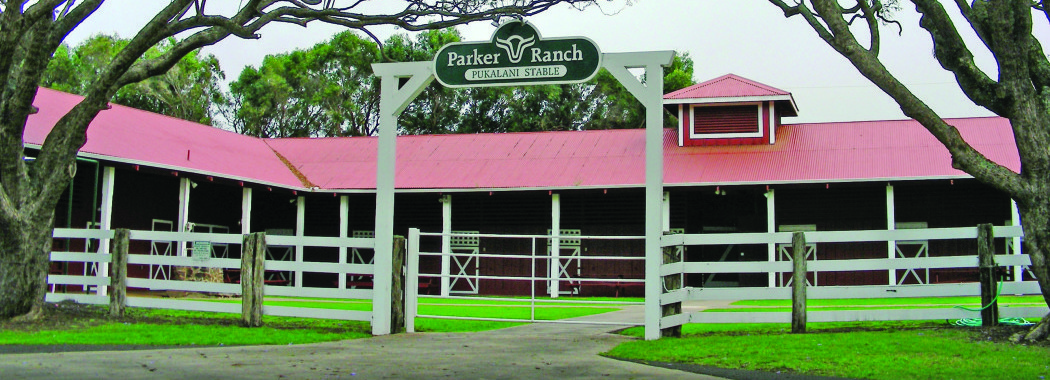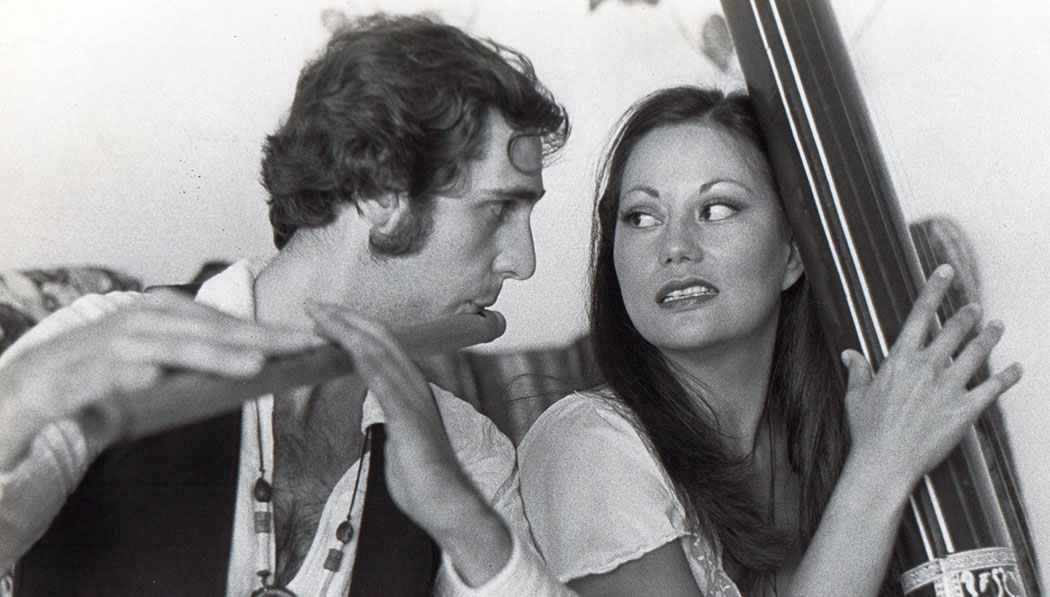
Makahiki—Codes for Regeneration
 By Marya Mann
By Marya Mann
Excitement filled all the hearts. It was a November night before Makahiki, around the time of the new moon, and the faint group of white-blue stars, the Pleiades, was about to rise in the east, signaling the return of Lono and the start of the rainy season in ancient Hawai‘i. From young to old, everyone knew that the star constellation, known in Hawai‘i as Na Huihui o Makali‘i, was in legend the source of the Polynesian and Hawaiian people.
The children ran to the ocean to bathe, for they must be clean and pure before the coming of Lono, the great spirit of Makahiki. Grandmothers bathed the babies, teens splashed in the waves, while adults started small fires along the beach, outlining the shore in stars of fire. Reflected in the great rolling waves, the firelight was soon joined by the morning star, and then Makali’i arose. Makahiki—rising Pleiades, the new year, the regeneration of the cycle of life—had begun!
Let the Story Be Told
In ancient times, Makahiki was not just a holiday. The whole four-month season of Ho‘oilo, was a time to celebrate the god Lono who provided peace and the fruits of the harvest. Now, after centuries during which such festivities were relegated to Hawai‘i’s pagan history, and after decades of hidden rituals and colorful and limited public celebrations, Hawaiians are rediscovering and recommitting to one of the most sacred and vital of all Hawaiian festivals.
There are gaps in the knowledge of Makahiki, for kāhuna and kūpuna who practiced the native religion were literally chased down by missionaries, scuttled into caves, forced underground, and often killed in an attempt to abolish the old ways. Yet the ceremonies, rhythms, and purposes of this significant annual event have been reawakened by those who view Makahiki as a way to look back at our stellar ancestry, and also an invigorating new way to move forward with wisdom, cooperation, and appreciation for sustainable living.
Cultural historian David Malo described Makahiki in his book, Hawaiian Antiquities, as an astonishing change in the normal fabric of life. For at least half of every eight-day period, everyone abstained from fishing and farming. Ceremonies honoring Lono, the god of fertility and agriculture, dominated social and religious activities.
“This time of regeneration also worked as a system of conserving resources,” writes Malo. “During the Makahiki certain kapu would be enacted, forbidding the gathering of specific limu (seaweeds), i‘a (fish), ‘ai (foods), or other important materials. By doing this, these things were allowed to replenish and maintain a healthy population.”
Everyone prayed to Lono for the health and prosperity of themselves, their families, the whole community and the land.
Lono, by the way, was not a vague god. He played a major part in a quartet of gods within one unity; with Kū, Kane, and Kanaloa, Lono functions as the hydrologic system of the island. “Lono works with the electromagnetic field of Earth to create clouds from the water vapor,” writes Lani Kukini‘elele, recorder and advocate for the Temple of Lono. “The clouds drop their rain and the trees and crops grow. Lono feeds the people. The clouds then move up into the mountains and drop their rain. The rain runs down the rivers and back to the ocean.
“Kane is the fresh water. Kū is the ocean where the first single cell organism appeared and from which all life is descended. Kū feeds the people (gives life). Kū sends tsunamis and other destructive forces (takes life). Kū also provides the water that is the foundation of life. Kanaloa is the sun. The sun heats the ocean and the water vapors rise.”
From these basic teachings, people could understand how the natural cycles of life functioned in pure form, and how to work with the natural ecosystem to survive and thrive. Their bodies, as microcosms of the larger field of life, were also subject to cycles. Through purification, strength-training, surfing, sports, and hula dancing, they prepared themselves for the challenges and joys of a festival that included purification, reverence, play, obligation, and the riches of Makahiki.
Lono Comes
“He is almost here. Lono is coming,” the children hurried each other to gather for the colorful procession. At its front, wearing a red kapa robe, a man carried a pole with a small carved figure of a human head. That was Lono Mauka. Lono’s spirit was supple. It had entered that figure to travel around the island. Beneath the figure, another pole was tied that crossed the long pole and from it hung a glorious white kapa blowing like a sail in the wind.
The crowd became very quiet as the poles were set on the ground. Then everyone placed gifts in the catchment between the poles—fruit, favorite kapa, a ball of twine. One of the men in the procession carried colored cords and tied knots in the blue when one family gave gifts, red for another ‘ohana. One color cord stood for one family.
A knot meant a good gift, and the man’s colored cords were bulging with knots.
First Phase of Makahiki
Makahiki began with spiritual cleansing and making ho‘okupu, offerings to the gods. All war was outlawed to allow unimpeded passage of the image of Lono, which consisted of a 12-foot wooden staff mounted with a small carved head. An even longer cross-piece, tied to the upper part of the staff, dangled lei, feathers, and foliage.
White kapa, as big as a ship’s sail, billowed from the cross bar. This was often called the akua loa, the “long god,” the idol that would be carried around the island in the official procession. Each ahupua‘a, or land division stretching from the mountains to the sea, created its own “short god,” the akua poko, which joined the akua loa for their journey around the island.
The festival proceeded in a clockwise circle around the island with the ocean to Lono’s left; to his right were the upland forests, realm of Kū. The journey symbolized the respite from Kū’s world of strife and separation.
All kapu and class restrictions were relaxed during this time and people mingled freely in Lono’s domain of peaceful living, agriculture, healing, and music. When the Kāhuna of Lono arrived at each community, members celebrated and offered gratitude for their prosperity.
The representatives of Lono collected bounty from the farms and ranches—pigs, taro, sweet potatoes, dried fish, kapa, and mats made by industrious artisans. Bird feathers, gourds, medicinal plants, and handicrafts graced the offering mats. With no money or medium of exchange, everyone offered their best, high and low, humble and great. Heiau, or temples, in each ahupua‘a were built to receive offerings. The word ahupua‘a, in fact, comes from ahu (altar) and pua‘a (pig) or pig’s altar.
Second Phase—Celebration of Regeneration, Hawaiian Olympic Games
The second phase was a time of le‘ale‘a, pleasure, and regeneration: hula dancing, the sports of boxing, wrestling, and lava sled racing at courses like the Keauhou Hōlua. Paddle sports, surfing, canoe races, swimming, relays, bowling, javelin marksmanship, as well as singing, making music, and feasting filled the days.
People came from near and far to engage in athletic contests, dance the hula, and feast on culinary delights: coconut puddings made from taro or sweet potatoes. These activities took place inside various pu‘uhonua at each stopping place on Lono’s journey around the island.
During ancient times, the pu‘uhonua was a land-based sanctuary for healing and redemption. The Pu‘uhonua O Hōnaunau we know today in West Hawai‘i is only a remnant of what was once a sanctuary that extended from the present site of the national park to Honokōhau Harbor north of Kailua Kona, according to Lani.
“The pu‘uhonua was the heart of the Lono kuleana. The pu‘uhonua was essentially the backup for the entire civilization. Their purpose was to maintain a spiritual land bank, with temples throughout the islands.”
The Kāhuna of Lono and Kū managed the area, cultivated crops, practiced medicinal plant healing, and performed spiritual ceremonies to connect practitioners with the elements of healthy, sustainable living. They taught practical skills of navigation, net-making, and personal development based on thousands of years of knowledge.
As Kāhuna gazed appreciatively upon the offerings of fruits, vegetables, and crafts, they observed the range of skill and nuance in crafts-making, hula dancing, and singing. They would also evaluate the health of the people and the land. “The Kāhuna, operating from their base in the pu’uhonua, constantly monitored and evaluated the civilization to know what measures were necessary to sustain the civilization and maintain the peace,” writes Frank Kamealoha Anuumealani Nobriga, the Kahuna of the Temple of Lono.
“From their observations, they would know where to send help after Makahiki,” the Kahuna explains. That Temple first-aid could take the form of ho‘oponopono if some internal conflict was the cause, a change in who served as chief, or how farming methods could be improved.
Makahiki, the season of Thanksgiving, Christmas, and Easter wrapped into one earthcentric celebration of a 25,000 year-old system of regeneration, still brings life to the ‘āina and its inhabitants. Together in song and dance, the spirit of the people lives on.
Third Phase—Tax Canoe to Lono
According to some historians, in the last phase of Makahiki, the wa‘a ‘auhau, or tax canoe, was loaded with ho‘okupu and taken out to sea where it was set adrift as a gift to Lono. The chief would go off shore in a canoe and when he came back and stepped on shore, a group of warriors threw spears at him. He had to deflect or parry the spears to prove his worthiness to continue to rule.
The story of Makahiki would end there, with a lei-bedecked canoe sailing off into the sunset, were it not for the ritual of net-shaking. A large net, the net of Makali‘i, was tied together and filled with kalo, mai‘a, niu, ‘uala and ulu, then held by four men at each corner as the Kahuna waited for silence. Then together they shook the net to scatter gifts into the waiting hands
of the community.
Everyone remembered the legend that a ruling chief had once intervened during a drought and famine, and by shaking down a net from heaven that overflowed with food, he was able to help feed the hungry people. As time moved on, all members of the community came to realize each person can intervene and help feed each other, help to make things right.
Makahiki Today
While it’s still harvest time and the festivities still honor the cycles of death and rebirth, Lono and Kū, feast and famine, and the regeneration of abundance, which is what Lono and Makahiki were about, some feel that the Kāhuna of the Temple of Lono are missing.
“While their religion is now re-emerging from hiding, their right to practice is still not guaranteed,” asserts Lani. “The Pu‘uhonua O Hōnaunau, for example, is occupied by the United States National Park Service that attempts to require traditional religious practitioners to secure a permit to use their own sacred lands.”
This has not stopped organizers in Waimea, Hilo, Puna, Honoka‘a, and Kailua Kona from perpetuating Makahiki activities in a moveable feast. This year’s festivities, fostered by Hawai‘i Island’s Kumu Keala Ching will be held at the Keauhou Shopping Center.
All agree, Makahiki holds within its ceremonial features social and ecological codes that can help us regenerate our world.
The Pleiades still rise in the eastern sky, the Temple of Lono still practices to preserve the people for seven generations into the future, and hula dancers still thrill to perform the ancient mystery of bringing divine play into the physical body.
Hau‘oli Makahiki Hou! ❖
Resources
Malo, David. Hawaiian Antiquities. Honolulu, HI: Bishop Museum Press, 1997, p146.
Curtis, Caroline. Stories of Life in Old Hawai‘i. Honolulu HI: Kamehameha Schools Press. p167-197.
Nobriga, Frank Kamealoha Anuumealani, Kahuna, Temple of Lono with Kukini‘elele, Lani (aka Lanny Sankin). Paper presented to the U.S. Supreme Court re State of Hawaii, et al. v. Office of Hawaiian Affairs, et al., No. 07-1372.
Contact writer Marya Mann: MaryaMann.com


